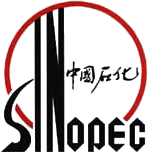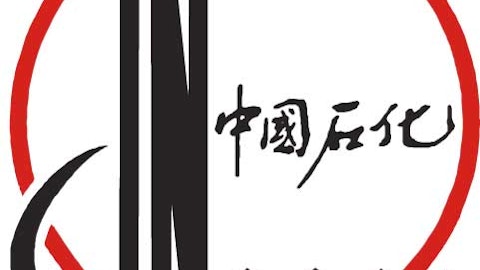You can thank the manufacturing sector for China”s rapid rise to among the world’s elite economies. Exports and cheap labor defined China’s thriving economy during its unrivaled growth years, with lower-cost manufacturing the source of every “Made-in-China” product sold in advanced economies. Manufacturing’s been the country’s lifeblood — so what happens when it runs out of steam?

Manufacturing can’t dig out of its rut
China’s purchasing managers’ index fell again in June, according to a report by HSBC and Markit, the reading’s lowest mark in nine months. The country’s PMI currently stands solidly in contraction territory with a score of 48.2, nearly 2 percentage points lower than the reading of 50 that marks neither contraction nor expansion in the sector.
A separate PMI poll by Chinese officials recorded a slightly better mark of 50.1 that showed slight expansion, but it left out a reading of new export orders — a key cog of the Chinese growth story. Even with the improvement, China’s PMI still ranks nearly a percentage point lower than the U.S.’s reading, which came out at a score of 50.9 in June, according to the Institute for Supply Management. That won’t help Chinese exports to the U.S., particularly with rising Chinese labor costs making it more expensive for firms to produce goods in the second-largest economy.
Chinese exports have experienced their own horror story lately, growing just 1% year-over-year in May. That was a 10-month low for growth, and while China’s maintained a trade surplus throughout its recent troubles, falling imports have helped prop up weak export demand. In particular, exports to Europe have taken a hard hit as China and the EU have engaged in a spat over trade barriers recently. It’s a double whammy for both sides, as Europe relies heavily on Chinese demand for its own exports. Any upset in the trade relation won’t help the region’s attempt to dig out of the recession that has persisted since 2008.
Even worse for Chinese manufacturing exports, new orders from abroad declined for a third straight month and at the fastest rate since September as foreign manufacturing demand wanes. Total new orders declined to a reading of 47.6, the worst such mark since October and far below the U.S.’s reading of 51.9 in June.
China’s stocks take a pounding
Yet even with all the negativity regarding China’s manufacturing sector, Beijing has been content to let things play out with minimal intervention. The country’s cash crunch has temporarily eased after China’s central bank ensured it would support a slower-growth economy, but the trend could grow worse with the tapering down of American stimulus efforts in the near future as emerging market outflows grow.
Investors have to be growing concerned, and it’s not just the manufacturing sector: Hong Kong’s Hang Seng has plunged more than 10% for the year with China’s slowing economy. It’s been one of the world’s worst-performing stock indices in 2013, performing even worse than those of recession-plagued economies such as Spain and France.
Manufacturers and industrial firms are front and center in the retreat, however, and it’s Chinese materials stocks that may be the worst bets for China investors right now.
Output at Chinese manufacturers is declining and stockpiles of goods are increasing, according to HSBC’s PMI reading. The combination is a storm of weak demand and oversupply for firms such as leading aluminum producer Chinalco, which is already in a rut with the fall of aluminum prices around the world and global demand still weak. Chinalco slowed production recently to deal with falling demand, but with China representing around 45% of the world’s demand for the metal last year, falling demand in the world’s second-largest economy is a killer blow to Chinalco and other powers in the industry. Until Chinese manufacturing can post a significant bounce-back, aluminum and other metals providers will be under serious pressure.
China’s nascent energy sector’s also hurting between manufacturing’s fall and weak exports. Chinese diesel exports declined to their weakest in seven months in May, and China’s Xinhua News Agency sees Chinese domestic diesel demand falling further in the current quarter to match falling prices. That’s not good news for Sinopec Shanghai Petrochemical Co. (ADR) (NYSE:SHI), one of the world’s largest companies and China’s leading oil giant. While Sinopec’s about as safe a stock as you can imagine in China — it’s the fifth-largest oil company in the world and has engaged in multiple deals with foreign oil giants in exploration and other activities — the firm’s shares could take a hit if domestic demand and prices continue to slump.
Chinese manufacturing and materials stocks may not be the only picks in trouble, however. Leading international manufacturers could see demand in the world’s second-largest economy, cutting into lofty growth expectations that relied upon China’s surge to make up for weakness elsewhere around the globe. Japanese industrial power Komatsu Ltd (ADR) (OTCBB:KMTUY), the second-largest industrial machinery manufacturer in the world, is betting on growing Chinese demand this fiscal year, in combination with the weak yen, to fuel growth.
The latter’s been a solid bet so far, but the former remains elusive. Komatsu’s had a tough time growing sales in China in recent quarters despite its position as the top manufacturer in the country, and with Chinese manufacturing on the downswing, that trend could continue. It may not affect the company’s bottom line too heavily if the yen continues to weaken, but Komatsu’s sales may not live up to the company’s hopes.
Optimism remains elusive
It’s important to note that China’s economy is still growing far faster than most. With the kind of hype and optimism that surrounded this country’s rise, however, China’s 7.7% growth rate it posted in the first quarter won’t live up to expectations — and could slow even more in the near future. Sinopec and other well-entrenched Chinese firms may be able to live up to their shareholders’ expectations through their international exposure and size, but use caution: China’s manufacturing slump, cash outflows, and slowing growth may be just the beginning for investors’ headaches.
Chinese manufacturing’s slump has harkened in the end of the “Made-in-China” era. Could an even bigger blow to the world’s second-largest economy be on the way? The Economist compares this disruptive invention to the steam engine and the printing press. Business Insider says it’s “the next trillion dollar industry.” And everyone from BMW, to Nike, to the U.S. Air Force is already using it every day.
The article China’s Growth Engine Goes Cold originally appeared on Fool.com.
Fool contributor Dan Carroll has no position in any stocks mentioned. The Motley Fool has no position in any of the stocks mentioned.
Copyright © 1995 – 2013 The Motley Fool, LLC. All rights reserved. The Motley Fool has a disclosure policy.




